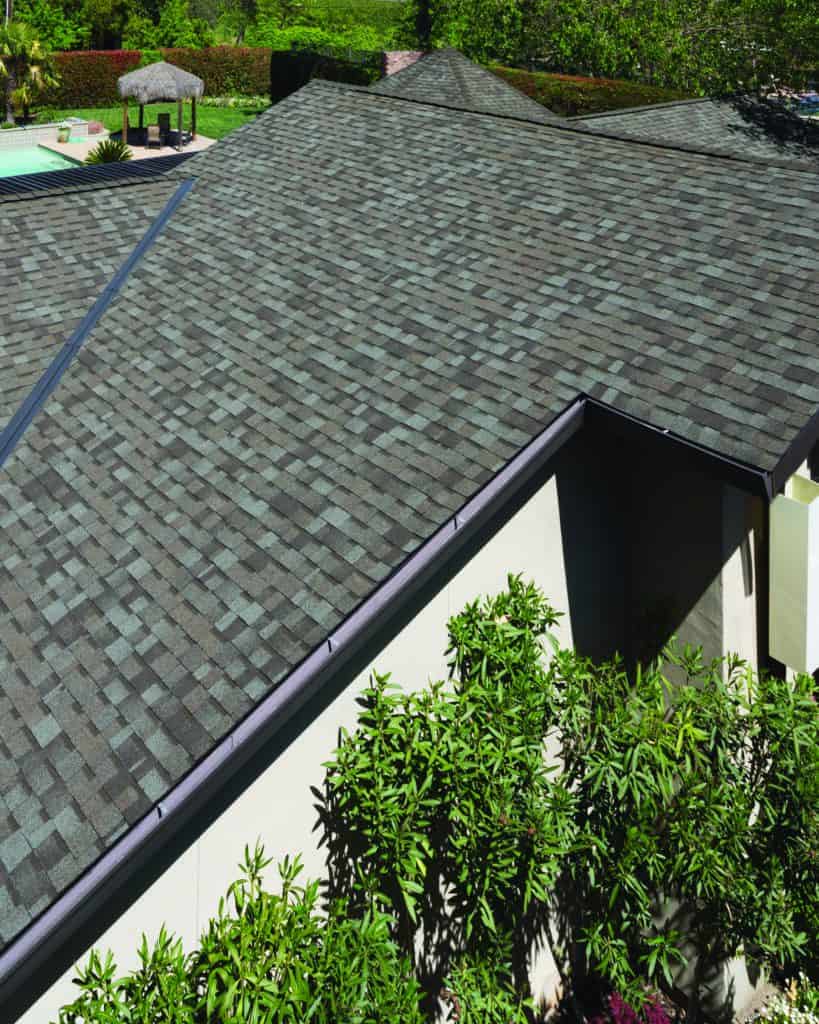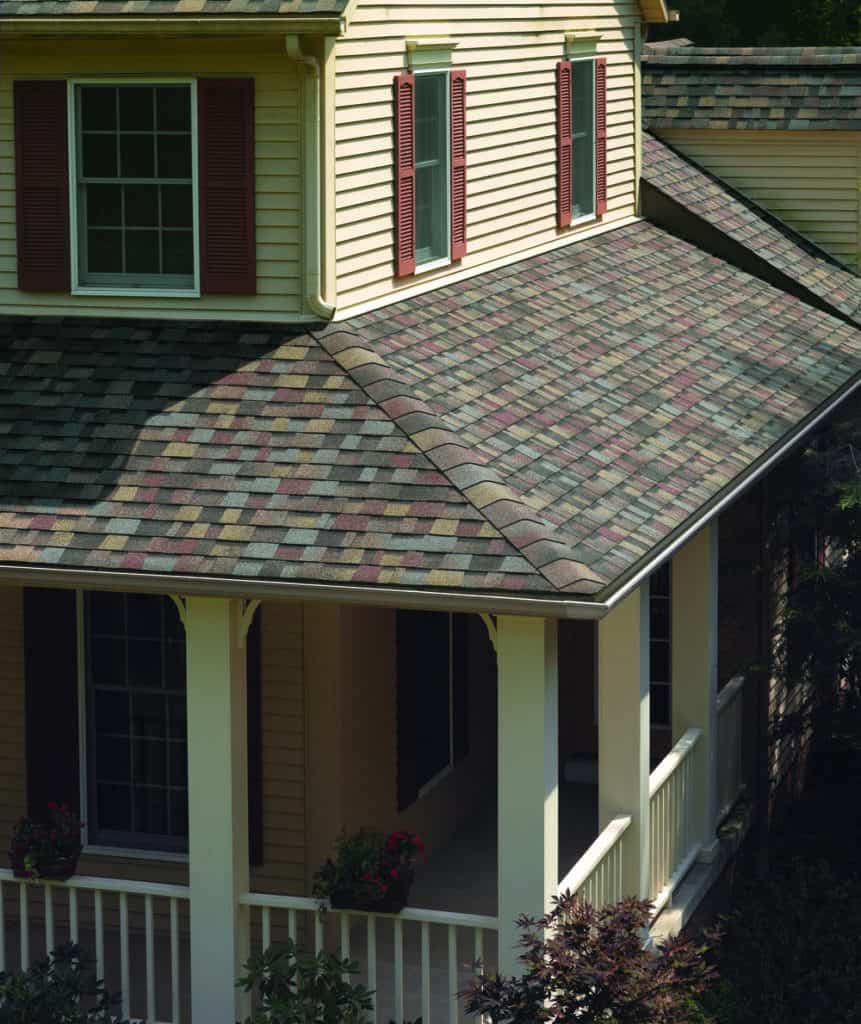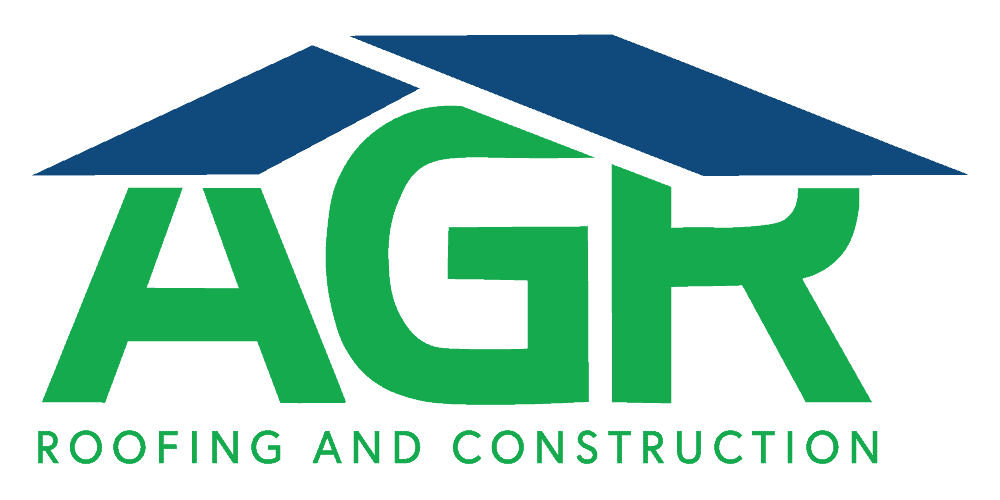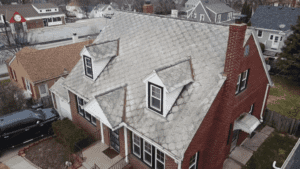On average, US households spend over $61,000 annually.
While the rise in the cost of living will likely slow down comparatively, it’s projected to keep increasing.
Thus, homeowners in the US must scrutinize every expenditure and investment, from simple buys like groceries and other necessities to big-ticket investments like renovations and general home improvement.
Ongoing expenditures (e.g., your choice of breakfast cereal) must be navigated uniquely in their own right. Every dollar counts in today’s landscape.
Still, renovations–like roofing installments and replacements–require a uniquely balanced approach during decision-making.
After all, you’ve got to live with your roofing choice for the foreseeable and distant future.
Budget consciousness is crucial. It always is. You’re justified in wanting to save as much as possible in today’s landscape. However, optimal savings aren’t always cut and dry. Spending more upfront can lead to more long-term savings when you invest strategically.
That doesn’t necessarily mean choosing the most extravagant option. Clay/slate tiles and wood shakes and shingles are often not viable purchases for homeowners despite their high quality.
Conversely, many homeowners believe asphalt shingles aren’t high enough quality, especially in their standard three-tab form. They want something more than the most basic option without breaking the budget.
An alternative happy medium exists between luxury options like clay or slate tiles and more value-based asphalt. It’s called composite roofing.
Below, we’ve written an overview of composite roofing, providing insights into what it can offer you and your home.

Composite Roofing Shingles Defined:
Also described as architectural shingles, composite roofing shingles boast more thickness and durability than basic three-tabs.
Moreover, they’re incredibly malleable in the design process. They can be formulated to resemble wood, slate, and clay without the high costs.
Composite’s mimicry is so realistic that slate lookalikes have chisel marks, while wood imitations have intricate graining patterns. It’s often near impossible to decipher these shingles from the products they’re replicating–especially when looking up from the ground level.
Generally, composite roofing shingles are sold under generic names like synthetic shakes, plastic shingles, and slate.
The formulation process for composite roofing differs depending on the manufacturer. Most commonly, recycled rubber and plastics are utilized. They’ll also include inhibitors to offset UV radiation damage and use polymers for enhanced strength.
Durability is a primary standout of composite roofing, especially when weighed alongside price. On top of sturdiness, most composite options offer homeowners fire, impact, and wind resistance. The shingles are also lightweight, making them easier to install.
Top Features Of Composite Roofing
This section offers a helpful breakdown of the various features offered by most composite roofing shingles:
Durability
When you pay that little bit extra for composite roofing instead of standard three-tab asphalt, you invest in heightened sturdiness, robustness, and durability. To that point, composite products can give you 40 to 50 years of reliable usage and often have lifetime warranties.
High-end asphalt shingles can sometimes stack up to this durability. Still, they’ll typically only give you 20 to 30 years before a replacement is necessary.
We’ll note that natural slate can last up to 75 years. That said, the upfront costs are typically too high to justify, making composite the ideal middle ground.
Fire Resistance
Typically, composite roofing shingles boast Class A fire ratings. Note how this isn’t always the case, though. Some composite products only have Class C ratings, which pale compared to the protection offered by Class A.
Verify fire resistance levels before investing in composite roofing shingles.
Wind Resistance
Most composite shingles possess excellent wind resistance, withstanding 110mph to 190mph winds. They vastly outperform asphalt shingles in this department, which max out at 90mph winds and start at 60mph.
It’s fair to point out how some asphalt options can reach up to 130mph with specialized installations.
Impact Resistance
Investing in composite roofing means your shingles will possess a Class 4 impact resistance rating. That’s the highest the scale can reach and means your shingles will remain unphased by hail storms.
Lightweight
Composite shingles might flawlessly mimic the appearance of slate. Yet, they remain a far cry from slate’s weight; they’re only a fraction as heavy, virtually equalling the size of asphalt shingles at between 180 and 350lbs per square.
For context, slate roofs can be as heavy as 1,500 pounds. This heftiness requires additional support in the form of reinforced framing, making installations more labor-intensive and costly.
Mineral Granules Aren’t A Factor.
Mineral granules are pivotal in forming asphalt shingles since they give the roofing its color and protect against the sun’s UV rays.
Old age and hail damage tend to wreak havoc on these granules, causing the asphalt to become exposed, leading to leaks.
Composite shingles don’t require granule layers due to their robustness, eliminating the potential for the issues detailed above to rear their ugly head.

Weighing The Cost Of Composite Roofing.
Composite roofing can be viewed as anything between a lavish expenditure and a discount purchase, depending on your available funds and needs as a homeowner.
Compared with other options, composite indeed does fall in the middle. Here’s a per-square breakdown of three-tab asphalt, composite, and slate tiles for context:
● Three-tab roofing is $200 per square.
● Composite roofing costs $400 to $600 per square.
● Slate roofing costs $1,000 to $3,000 per square.
Notice the lack of dramatic jump in pricing averages from three-tab products to composite. Then, notice how significant the increase is from the high end of composite to the high end of slate.
Let’s now throw cedar roofing into the mix.
HomeGuide says the average cost of a cedar roofing project is $25,000 on the high end. An architectural/composite roofing shingle project is $16,000 on the high end (it’s $12,000 for asphalt).
Again, we see how composite/architectural roofing shingles bridge the gap. They give you more quality without an astronomical price increase.
Contact AGR To Learn More About Composite Shingles
Aesthetics, durability, and reasonable price points are all defining features of composite shingles.
While asphalt shingles–even basic three-tab models–are viable (and popular) roofing options, you shouldn’t be limited in your choices. You shouldn’t have to settle for roofing you don’t want.
Composite roofing can be molded into an aesthetic style you love at a cost that makes sense without under-delivering on quality and reliability.
Learn more about composite roofing shingles and contact AGR today with your inquiries and questions.





